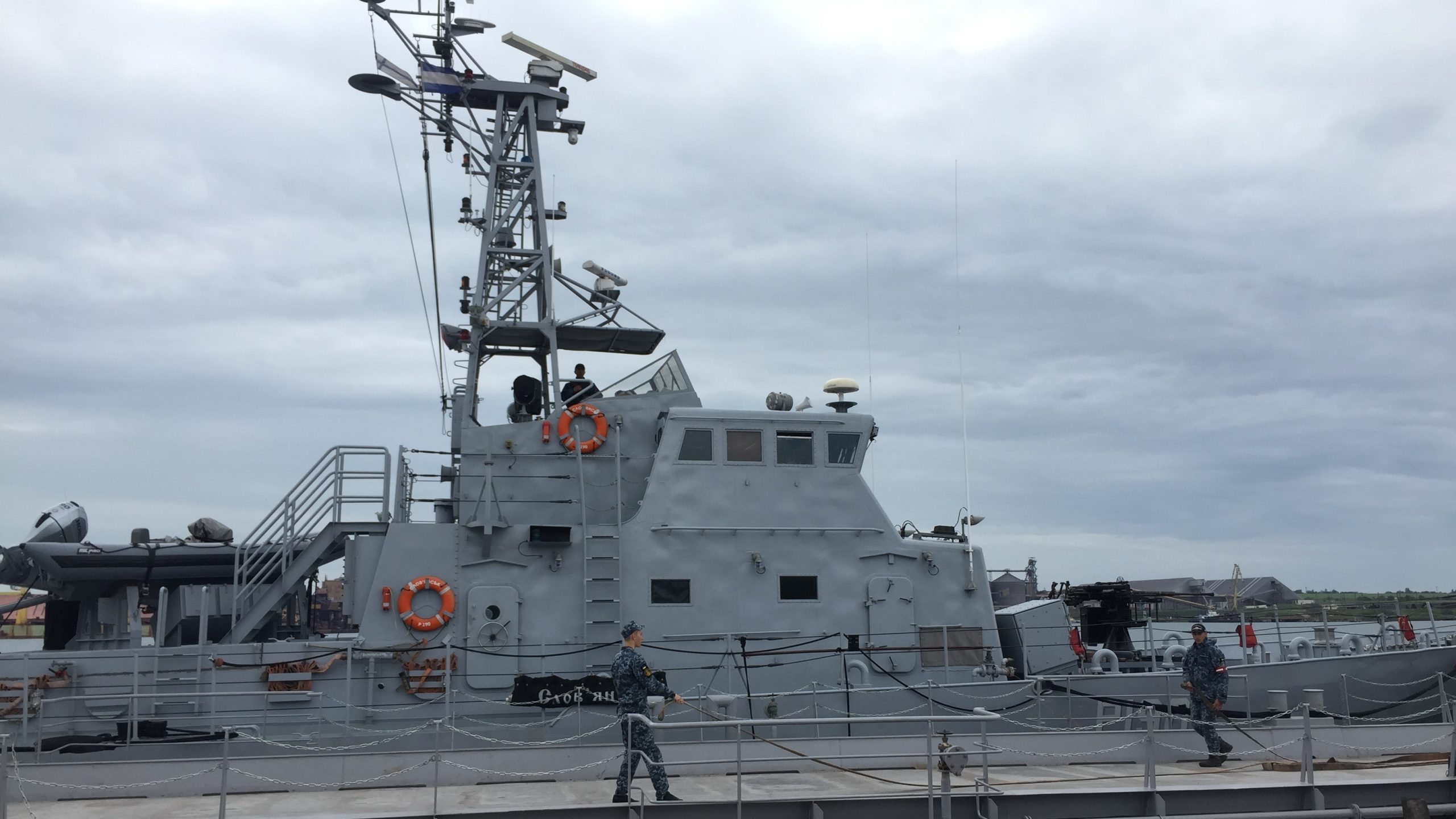ODESSA, Ukraine — The evacuation of Ukrainian ships from Crimea in March 2014 could not happen fast enough. In a political changeover that turned Ukraine away from Russia and toward the West, Russia seized the peninsula, and its Black Sea navy easily encircled Ukrainian ships, capturing 70% of the country’s navy.
Seven years later, the U.S. is donating five P-190 Sloviansk class island patrol vessels and eight Mark VI patrol boats to a fledgling Ukrainian navy of no more than 30 ships. Ukraine is reconstituting its navy in order to patrol its coastlines and help counter Russia’s increased military presence in the Black Sea and the tiny Sea of Azov closed in by Crimea, Ukraine, and Russia. The 1936 Montreux Convention limits the presence of foreign navies in the Black Sea, meaning U.S. vessels must rotate out every two weeks to maintain a presence. But Black Sea nations can patrol as they wish.
“We lost Crimea temporarily, but we lost it,” Foreign Minister Dmytro Kuleba told the Washington Examiner in Kyiv. “We are heavily investing in basically the creation of a new Ukrainian navy.”
Such a navy could deter constant Russian harassment and the ever-present possibility that Russian ships could reach poorly defended Ukrainian shores.
Russia’s intentions are clear.
RUSSIA STIRS ETHNIC STRIFE IN UKRAINE IN HOPES OF TRIGGERING CIVIL WAR, FOREIGN MINISTER SAYS
A Russian coast guard vessel fired on three Ukrainian navy vessels on Nov. 25, 2018, attempting to pass from the Black Sea into the Sea of Azov through the Kerch Strait to access the Ukrainian port of Mariupol.
The incident was a sign that Russia intended to make the tiny sea a “Russian lake” and not shared international waters. The building of the Kerch Bridge by Russia from its mainland to the Crimean Peninsula limited Ukraine’s ability to receive container ships at one of its most important ports in Mariupol, in its industrial east.
“We have a pretty good naval development strategy until 2035, which envisages taking control over the 12-mile zone and then building up assets and capabilities to project our power beyond our shore,” said Alexander Khara, a security analyst and former Ukrainian diplomat.
The U.S. has already delivered two island patrol vessels, with three more promised this year in addition to additional Mark VI patrol boats, part of a security assistance package announced by the Pentagon in March. The full $125 million package also includes training, equipment, and advisers to help Ukraine try securing its borders and move closer to operating easily with NATO forces.
“That’s why we need this type of ship, even though they are a bit old ones,” Khara said of the Mark VI donations. “For our particular goals, they are perfectly fit.”
Operations officer Navy Lt. Anatolii Badiul, 23, joined the navy after it was decimated, but he’s part of the young new class of sailors who want to see Ukraine push Russian boats away from its coastlines simply by sailing the coastline armed with anti-ship missiles.
“Things changed dramatically after 2014. Before, we were brothers,” Badiul said of the fellow Slavic nation of Russia, which held a controversial long-term lease in Crimea before annexing the peninsula.
“Now, we are enemies with Russia. So, it’s changed our way of thinking,” he said.
The two new P-190 vessels docked at a rudimentary naval base 30 km from Odessa are hardly a new fleet, but they are a start for a battered democratic nation devoid of military alliances.
Ukraine’s navy has some 20,000 sailors and marines and is in the process of rebuilding shore infrastructure in Odessa to replace the naval assets lost in Crimea.

Badiul, who was educated at the Britannia Royal Naval School in the United Kingdom and by American leadership trainers in Ukraine, explained his navy’s defensive doctrine.
“We’re only defending our territorial waters in exclusive economic zone,” he said proudly on the deck of one of the American-donated ships.
The officer walked the freshly painted boat in blue fatigues, showing off its living quarters as the aroma of a cooking lunch wafted from the galley. He stopped at a plaque recognizing the ship’s name, Slovyansk. The name recognizes a city in occupied Donetsk and the birthplace of two Ukrainian marines who fell in the fight against Russia.
The Russian harassment of commercial and naval ships is constant, the young sailor explained, especially during multinational exercises.
“Every time we are [training], we see Russian ships,” he said. “I have seen the numbers on the side of the ship, so it’s pretty close.”
For an Eastern European nation endeavoring to rid its oppressive Soviet past and join NATO, but restricted by a frozen conflict with Russian-supported separatists in its east, the U.S. assistance and doctrine are vital.
CLICK HERE TO READ MORE FROM THE WASHINGTON EXAMINER
“It’s a big thing for us, which we really appreciate, is the training, the training we make together,” he said of the U.S. commitment beyond naval assets. “The more training we make, the stronger the Ukrainian navy.”

